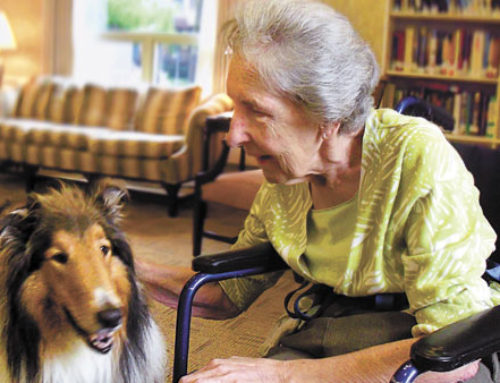A series identifying technology disruption in the ageless living space.
In 2001, the average age of people moving into assisted living in America was 80, and by 2010 it was 87, according to Elizabeth Jensen, clinical director at Direct Supply, senior living equipment, and solutions provider. “Assisted living residents today have two to three chronic conditions and adults 85 and older have a much higher risk of falling compared to their younger counterparts.” (1)
Bradley Schurman formerly with AARP, is a cofounder of EconomyFour, a social innovation organization helping businesses and governments translate human longevity into societal and economic opportunities. With increasing life spans, Schurman defines a four-stage life vs. the commonly referenced three stages of youth, middle age and old age. (2) Bifurcating old age, into what developers call “active adult” and among the frail elderly, what assisted living terms as “high acuity”. Many of us boomers are witnessing these last stages first hand with our own parents – a place we can’t imagine going personally. The growing frail elderly will be the largest demographic in this age group ever – in need of a few technology disrupters.
Disruptors: Assistive Technology
The field of artificial intelligence (AI) holds great innovation in “smart” versions of common items such as beds, canes, toilets and silverware. Assistive technologies will be more in use and more advanced, aimed at helping older adults remain independent for longer periods of time. Motion detectors to alert of a fall or activity of someone living alone, and other “smart” home technologies are examples. Falls rank as the seventh leading cause of unintentional injury-fatality, with older adults having a five-to-eight times higher risk of dying within the first three months of a hip fracture than those without. (3) A few disrupters in this space, reaching a tipping point in the “go to market” stage are referenced below.
- VirtuSense Technologies specializes in developing systems that perform gait and balance analysis. Known in the sports fields for assisting athletes reduce injuries and enhance performance, they have applied similar technology to the field of aging. Gait is as individual as your fingerprints. Assessments record all sensory contribution to an individual’s postural control creating a “balance” dashboard while comparing the scores against population norms to identify fall risk. The technology isolates gait disorders even when using canes or walkers, in under 30 seconds. With this real-time analysis, the system moves beyond assessment, to bio-feedback training as part of a personalized program.
- Smart Canes are assistive technology receiving a lot of attention today. A white cane is one of the most common mobility aids for the visually impaired, however, it does not assist users in finding obstacles above the waist, or at distances greater than three feet. A team of students at Texas A&M University recently created a smart cane that can help visually impaired people avoid obstacles. The Navigational & Object Visual Assistant (NOVA) is a prototype device that sends out ultrasonic signals in front of the user and vibrates when it detects something. The stronger the returning signal from the ultrasonic sensor, the stronger the motors vibrate. A smartphone app communicates with the cane to provide audio feedback, such as telling the user to turn right or left. Ultimately, smart cane technology will interface with GPS navigation on the phone to further expand the device’s capabilities.
- Like canes and a host of other “smart devices”, there are several technology innovators in the hip airbag space. The opportunity to design a hip belt that is actually “cool” and “hip” vs. clunky is perhaps one of the bigger challenges. Helite, a company focused on airbag technology is marketing a product that notes fall detection and deploys airbags within two seconds from a device worn around the hips. Both airbags inflate in .08 seconds to protect the hips before ground impact. Active Protective is another company actively engaged in product development in this space, with a more fashion-forward belt option that is not yet available for purchase. Disruption? Coming to a Nieman Marcus near you, soon.
- Senior Housing News. Com Available April 16, 2019. https://seniorhousingnews.com/2017/04/27/tips-manage-rising-acuity-assisted-living/. Tips to manage rising acuity in assisted living.
- com. Available March 16, 2019. https://economyfour.com/2019/03/rethink-reset-move-ahead-economyfour-on-the-today-show/. Long life, a topic of your time. One you see all around you.
- Gray-Miceli, D. (2008) Evidence-based geriatric nursing protocols for best practice. New York, NY. Springer Publishing Company, LLC 163-188.





